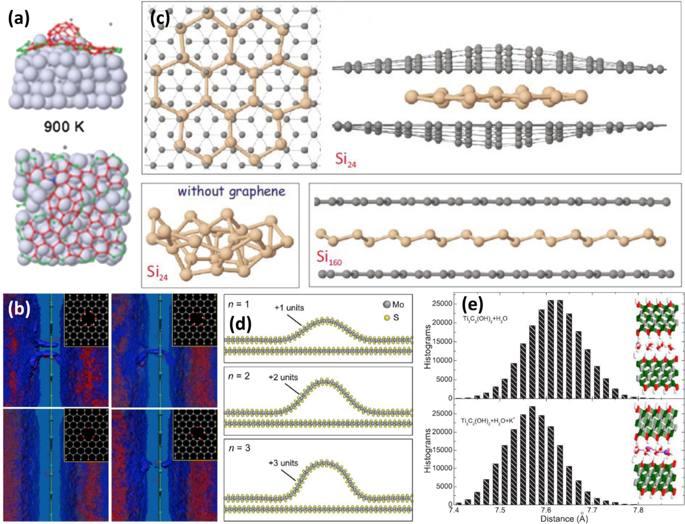npj Computational Materials ( IF 9.7 ) Pub Date : 2020-03-19 , DOI: 10.1038/s41524-020-0280-2 Kasra Momeni , Yanzhou Ji , Yuanxi Wang , Shiddartha Paul , Sara Neshani , Dundar E. Yilmaz , Yun Kyung Shin , Difan Zhang , Jin-Wu Jiang , Harold S. Park , Susan Sinnott , Adri van Duin , Vincent Crespi , Long-Qing Chen

|
The successful discovery and isolation of graphene in 2004, and the subsequent synthesis of layered semiconductors and heterostructures beyond graphene have led to the exploding field of two-dimensional (2D) materials that explore their growth, new atomic-scale physics, and potential device applications. This review aims to provide an overview of theoretical, computational, and machine learning methods and tools at multiple length and time scales, and discuss how they can be utilized to assist/guide the design and synthesis of 2D materials beyond graphene. We focus on three methods at different length and time scales as follows: (i) nanoscale atomistic simulations including density functional theory (DFT) calculations and molecular dynamics simulations employing empirical and reactive interatomic potentials; (ii) mesoscale methods such as phase-field method; and (iii) macroscale continuum approaches by coupling thermal and chemical transport equations. We discuss how machine learning can be combined with computation and experiments to understand the correlations between structures and properties of 2D materials, and to guide the discovery of new 2D materials. We will also provide an outlook for the applications of computational approaches to 2D materials synthesis and growth in general.
中文翻译:

二维材料的多尺度计算理解和增长:综述
2004年成功发现和隔离了石墨烯,随后合成了层状半导体和石墨烯以外的异质结构,导致了二维(2D)材料的爆炸式发展,探索了它们的生长,新的原子尺度物理学和潜在的器件应用。这篇综述旨在提供多种长度和时间尺度上的理论,计算和机器学习方法与工具的概述,并讨论如何利用它们来辅助/指导石墨烯以外的2D材料的设计和合成。我们关注于以下三种在不同长度和时间尺度上的方法:(i)纳米级原子模拟,包括密度泛函理论(DFT)计算和利用经验和反应性原子间电势的分子动力学模拟;(ii)中尺度方法,例如相场法;(iii)通过耦合热和化学传输方程的宏观连续体方法。我们讨论了如何将机器学习与计算和实验相结合,以了解2D材料的结构和属性之间的相互关系,并指导发现新的2D材料。我们还将提供总体上二维材料合成和生长的计算方法应用的前景。


























 京公网安备 11010802027423号
京公网安备 11010802027423号